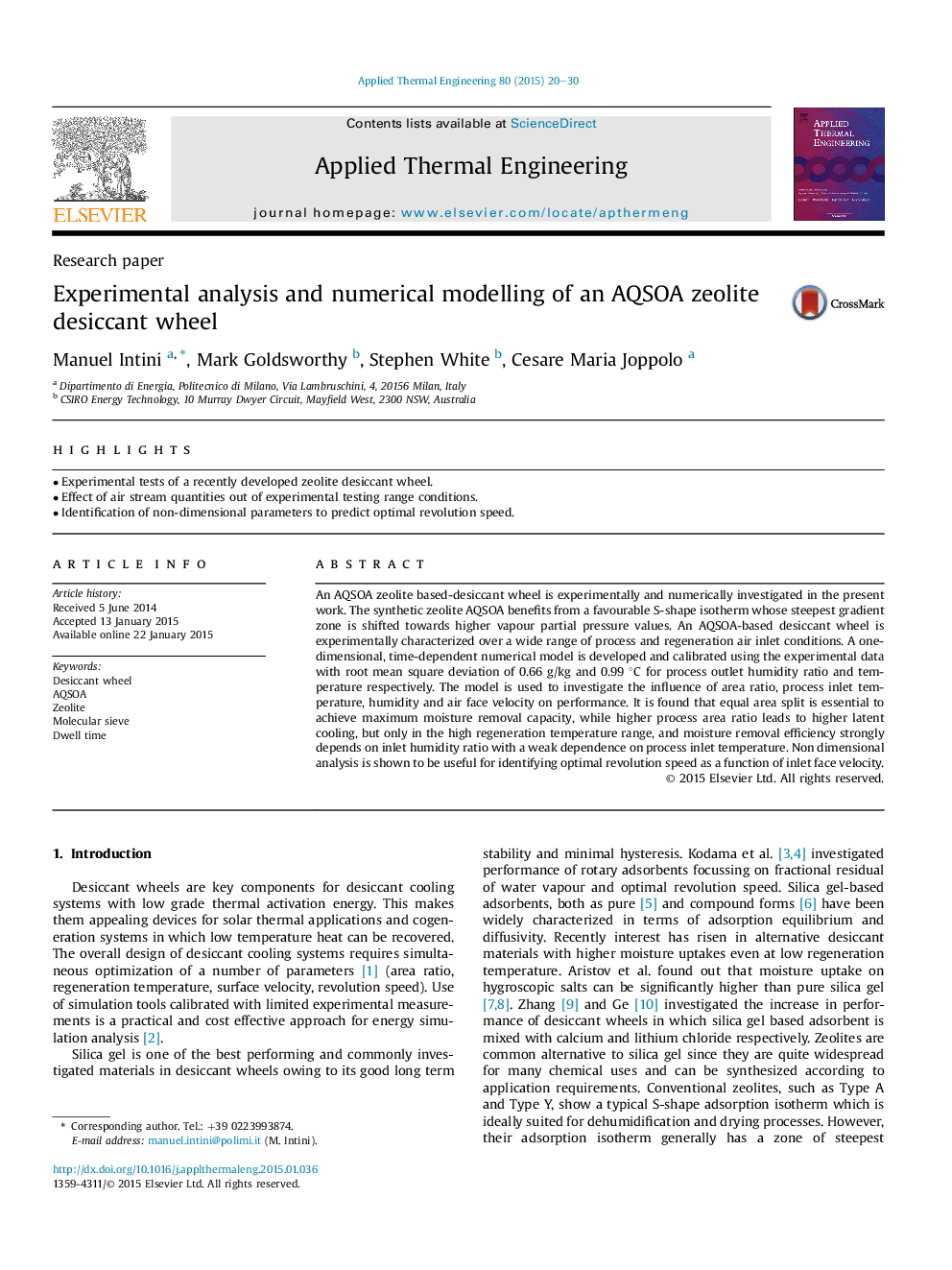| Article ID | Journal | Published Year | Pages | File Type |
|---|---|---|---|---|
| 645660 | Applied Thermal Engineering | 2015 | 11 Pages |
Abstract
An AQSOA zeolite based-desiccant wheel is experimentally and numerically investigated in the present work. The synthetic zeolite AQSOA benefits from a favourable S-shape isotherm whose steepest gradient zone is shifted towards higher vapour partial pressure values. An AQSOA-based desiccant wheel is experimentally characterized over a wide range of process and regeneration air inlet conditions. A one-dimensional, time-dependent numerical model is developed and calibrated using the experimental data with root mean square deviation of 0.66 g/kg and 0.99 °C for process outlet humidity ratio and temperature respectively. The model is used to investigate the influence of area ratio, process inlet temperature, humidity and air face velocity on performance. It is found that equal area split is essential to achieve maximum moisture removal capacity, while higher process area ratio leads to higher latent cooling, but only in the high regeneration temperature range, and moisture removal efficiency strongly depends on inlet humidity ratio with a weak dependence on process inlet temperature. Non dimensional analysis is shown to be useful for identifying optimal revolution speed as a function of inlet face velocity.
Related Topics
Physical Sciences and Engineering
Chemical Engineering
Fluid Flow and Transfer Processes
Authors
Manuel Intini, Mark Goldsworthy, Stephen White, Cesare Maria Joppolo,
